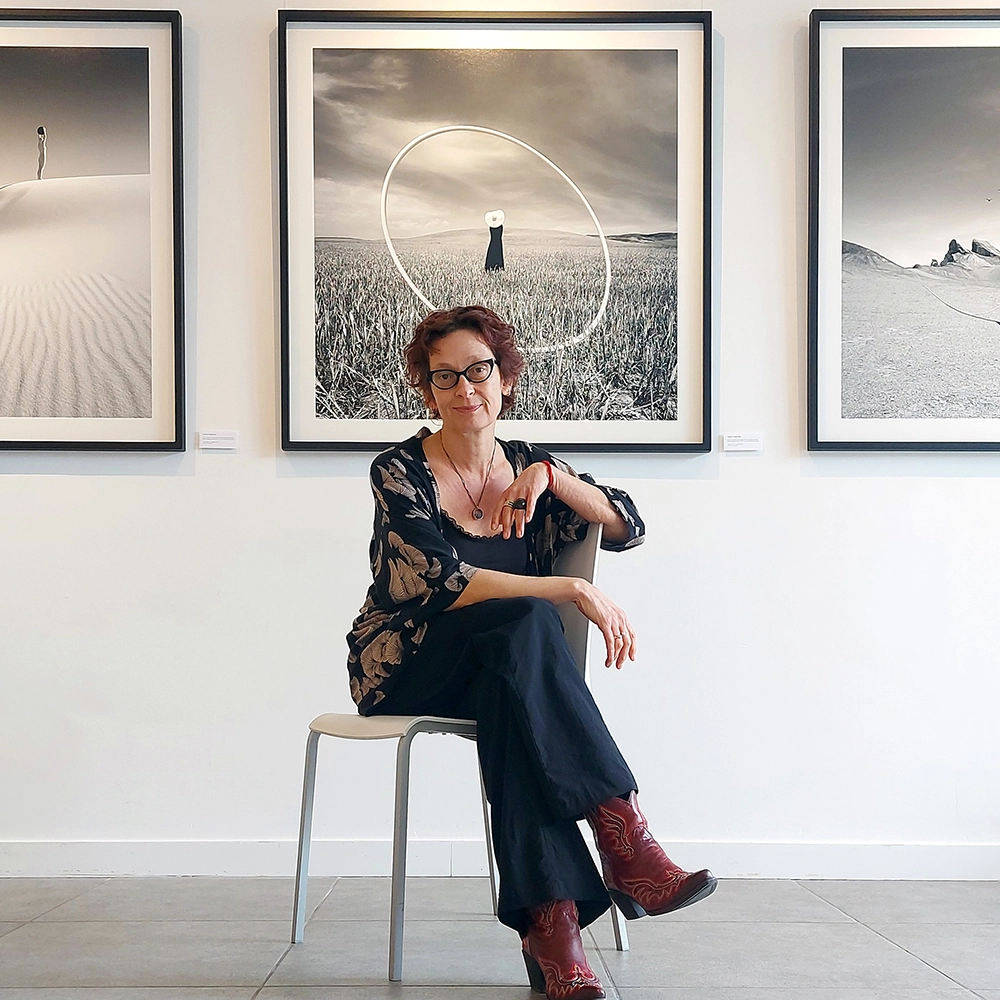Astrid Verhoef is a fine art photographer based in Amsterdam. She graduated from the Arts Academy “Hoogeschool voor de Beeldende Kunsten Utrecht” in 1998. Astrid started as a classic landscape photographer, inspired by photographers like Ansel Adams, but gradually felt the need to express herself differently, in a manner that more reflected her imagination and creativity. She started building a new portfolio around 2007, and by 2010 she had fully adopted the theatrical visual language we can recognise in her photography today.
Her work can since be defined as surreal compositions, showing figures and objects that seem to be at odds with the desolate environments they find themselves in. Astrid aims to emphasize the contrast between the human presence and the landscape, while exploring her personal relationship with the natural world.
Throughout her career Astrid also worked as a curator, and has produced exhibitions in New York, Amsterdam, Leiden and Tokyo. She’s collaborated with Photoville New York and was a program manager and curator for photography platform Photo31 from 2018 until 2024.
But her main focus will always be her autonomous artwork which leads her to magnificent landscapes, from The Netherlands and Spain to Australia and the USA, to explore her personal relationship with the natural world. Astrid usually works solo and therefore is also the model in most of her images. If needed she uses basic collage techniques in her artworks top achieve the desired image, but she never adds any components by using AI. The props and figures are all actually photographed, which makes every artwork a cherished memory as well.
Astrid’s artworks have been internationally awarded, and have been exhibited in London, Amsterdam, Los Angeles, Berlin, Cannes, Milan, New York, Paris, Rotterdam, Sydney, and Tokyo. Her artwork is included in the collection of the Société Nationale des Beaux Arts in Paris.
Statement:
As a fine art photographer Astrid Verhoef explores her personal connection to the natural world. The complicated relationship between human and nature is a common thread throughout her work, from the ‘Inscapes’ and ‘Human//Nature’ series up to the more recent single images. When she photographs herself in these desolate landscapes an anonymous character arises that wants to connect with her surroundings. However, her roots in contemporary modern life often remain visible in the form of an unnatural element. The serene images can be seen as emotional translations where the desire for synergy is
challenged by an urge to control.
The long-term project 'Human//Nature' is a logical continuation of Verhoef’s well known 'Inscapes' series. With an increasing minimal visual language and a more geometrical approach to composition, she aims to emphasize the contrast between the human presence and the natural. With her latest work, At the same time she wants to create moments or scenes that can only exist because of the combination of the two. Her theatrical photography is also an ode to imagination itself.
For these images Astrid Verhoef works solo on location, all elements are photographed and she acts as a model in her own images.
These images do not contain any AI generated components. Only basic Photoshop tools were used, such as color /contrast adjustments, collage technique (if needed).
Astrid Verhoef has photographed on locations in Australia (Northern Territory, Southern & West Australia), Spain (mainland & Canary Islands), USA (Utah, Nevada, Arizona & California) and The Netherlands.
